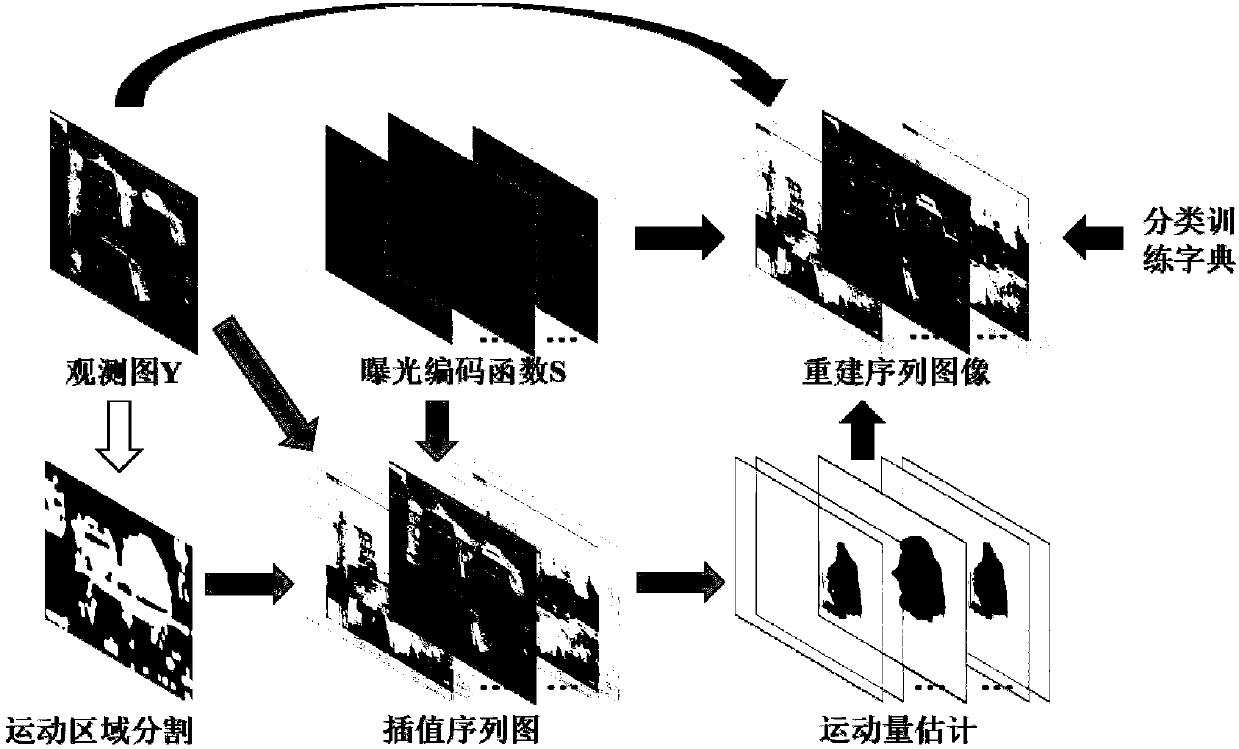Motion estimation and adaptive video reconstruction method based on interpolation
A motion estimation and self-adaptive technology, applied in the field of image processing, can solve the problems of inability to further distinguish the accurate motion amount of the motion area, high time-consuming, insufficient motion estimation accuracy, etc., and achieve the effect of improving the quality of the reconstructed image
- Summary
- Abstract
- Description
- Claims
- Application Information
AI Technical Summary
Problems solved by technology
Method used
Image
Examples
Embodiment Construction
[0048] The present invention will be further described below in conjunction with accompanying drawing.
[0049] An adaptive reconstruction method based on signal correlation provided by the present invention mainly includes several steps such as sample classification, parameter training, preliminary block reconstruction, motion estimation and video reconstruction, such as figure 1 shown.
[0050] Step 1. Sample Classification
[0051] 1-1 Use the optical flow method to calculate the motion map of adjacent frame images in the sample video, as shown in Figure 2, for the video of T frames, there are T-1 motion map, where T=16;
[0052] 1-2 Randomly sample the sample video, and the sample block size is 8×8×T;
[0053] 1-3 Calculate the average movement amount of each sample block according to the movement amount map in 1-1:
[0054]
[0055] where B i ∈ R 1×64 is the vector obtained by arranging the motion values in the corresponding sampling area (8×8) in the i-th motio...
PUM
 Login to View More
Login to View More Abstract
Description
Claims
Application Information
 Login to View More
Login to View More - R&D
- Intellectual Property
- Life Sciences
- Materials
- Tech Scout
- Unparalleled Data Quality
- Higher Quality Content
- 60% Fewer Hallucinations
Browse by: Latest US Patents, China's latest patents, Technical Efficacy Thesaurus, Application Domain, Technology Topic, Popular Technical Reports.
© 2025 PatSnap. All rights reserved.Legal|Privacy policy|Modern Slavery Act Transparency Statement|Sitemap|About US| Contact US: help@patsnap.com



